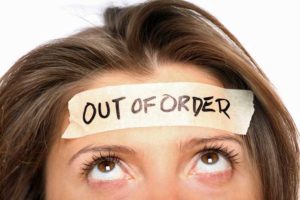Though they affect more people than asthma and diabetes combined, we still know relatively little about what causes migraines. However, when it comes to preventing a migraine, learning to identify your own personal triggers is crucial.
Some common triggers include stress, red wine, pickled foods, skipping a meal, chocolate and caffeine.
You might want to try using a migraine journal or diary to track potential migraine triggers. Be sure to note down what you were doing before the headache started.
What did you eat that day? How much did you sleep the previous night? Were you under any kind of stress? When it comes to understanding your migraine pattern, everyday details are key clues.
The Most Common Migraine Triggers
When you read your migraine journal, you might notice that certain factors appear and reappear. They may include:
- Menstrual period
- Extreme fatigue
- Stress
- Certain foods and drinks
- Caffeine withdrawal or too much caffeine
- Weather changes
- Smoking
- Exercise
- Bright lights
- Certain smells
- Fasting or skipping meals
- Changes in your regular sleep pattern

A lot of the triggers on this list are likely to happen together. For example, stress might affect the quality of your sleep, leading to fatigue the following day.
You sleep in, and skip breakfast because you’re running late. At work, you compensate for your tiredness with an extra coffee. Sometimes, one trigger can lead to another like a domino effect.
When you review your migraine journal, look for double or triple triggers that tend to occur together.
Some Triggers Can Be Easily Avoided
Some triggers are easier to avoid than others. If strong perfume or cologne is a trigger, you can ask the people you come into contact with everyday, such as your family and co-workers, to go scent-free.
Other triggers, such as light exposure, can be neutralized with the help of sunglasses, as well as an anti-glare computer screen and low-intensity bulbs.
You may also be able to take control of dietary triggers, such as caffeine and alcohol consumption. Some of the most common dietary culprits include:
- Pickled and fermented foods, including those that contain the flavour enhancer monosodium glutamate (MSG)
- Chocolate
- Aged cheeses, including Parmesan, cheddar, and blue cheese
- Smoked fish
- Processed meats, including hot dogs, luncheon meat, dried and cured sausages, pepperoni, and salami
- Onions
- Diet drinks
- Alcohol, including red and white wines
Other Triggers Are Difficult to Avoid
Unfortunately, not all triggers can be avoided, and stress is one of them. Many people have difficulty recognizing the effects of stress before it’s too late.
In some cases, stress-related headaches appear after the stressor—a job interview, an exam, or a critical presentation—is over. This is known as a “letdown” headache.

If there are stressors in your life that you can eliminate, do so. But keep in mind that stress is a normal part of life. There’s no way to completely eliminate every source of stress. That’s where lifestyle changes come in.
Preventing Migraines Through Lifestyle Changes
Though you can’t always avoid migraines, practicing self-care may help. The following lifestyle changes and prevention techniques can minimize the impact of migraines on your day-to-day life.
1- Find the right relaxation technique to reduce muscle tension.
Experts recommend yoga, progressive muscle relaxation, meditation, guided imagery and biofeedback to reduce tension in the muscles, which is a factor in migraine headaches. Through biofeedback, for example, you can learn to control your breathing and heart rate and relax your muscles.
2- Get the right amount of sleep.
When your sleep habits get thrown off, fatigue can increase the likelihood of a migraine attack. Going to bed at the same time every night can make it easier to get a good night’s sleep. Take time to relax and unwind before you go to bed.
3- Exercise, but don’t overdo it.

Obesity may be linked to an increased risk for migraines. Staying healthy through regular aerobic exercise and a health diet is important. Physical activity can also help to relieve muscle tension, but don’t overdo it – especially when it comes to lifting heavy weights. Some people find that exercise triggers headaches. If you’re one of them, talk to your doctor about what you can do to stay fit.
4- Whenever possible, minimize stress.
How do you like to unwind? Some people like to spend time with family and friends, while others like to recharge alone through meditation, cooking a meal, or cuddling up with a good book. You may find that stress management or counseling can also help.
5- Create a consistent daily routine.
Establishing a daily routine can help to ensure that you eat regular meals and get enough sleep to keep your energy levels up. A routine can also help to combat stress.
6- Learn to accept and cope with your migraines.
Research has shown that certain adaptive strategies, including learning to cope (LTC) and cognitive behavioural therapy (CBT) may be helpful in preventing migraines.
7- When a migraine strikes, rest and relax.
Instead of trying to “power through” migraine symptoms, find a dark, quiet room to rest. Apply gentle pressure to the areas where you feel pain and use an icepack on the back of your neck.
Learn ways to relieve your migraines with our article on prevention and treatment of migraines.
The information in this article should not be taken as professional medical advice. If you are having issues or have health-related concerns, you should see your personal physician.
This page is also available in:
![]() English
English


